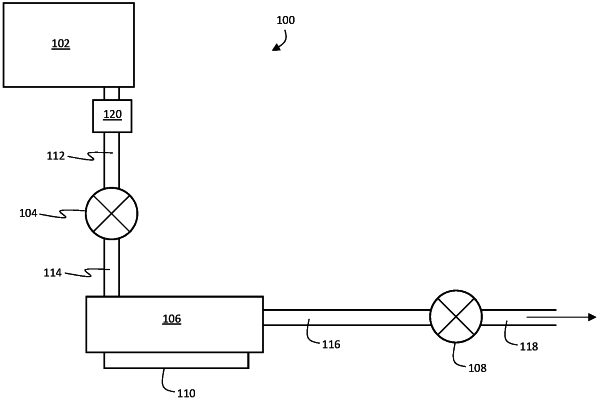| CPC F25B 19/00 (2013.01) [F25B 41/31 (2021.01); F25B 49/00 (2013.01); F25B 2400/0409 (2013.01); F25B 2700/197 (2013.01)] | 15 Claims |

|
1. A thermal management system, comprising:
an open circuit refrigeration system comprising:
a receiver configured to store a refrigerant fluid comprising ammonia and including a liquid refrigerant fluid;
an evaporator attached to a heat load and configured to extract heat from the heat load when the heat load contacts the evaporator having an inlet and an outlet;
a vapor quality sensor that produces a sensor signal that is a measure of a vapor quality of the refrigerant fluid emerging from an outlet of the evaporator;
a controller that receives the sensor signal from the vapor quality sensor and produces one or more electrical control signals;
an expansion valve responsive to at least one of the one or more electrical control signals to control the vapor quality of the refrigerant fluid at the outlet of the evaporator with, with the vapor quality being a value of a ratio of mass of vapor to mass of liquid plus vapor, the vapor quality controlled, according to a set point temperature value, and with the expansion valve and the evaporator configured to maintain the vapor quality that emerges from the outlet of the evaporator, so as not to exceed a critical vapor quality defined as one (1), and with the vapor quality further being a value that is less than a value of vapor quality at which dryout occurs in the evaporator;
an exhaust line configured to receive all of the refrigerant fluid emerging from the outlet of the evaporator, with the receiver, the evaporator, the outlet, the expansion valve, and the exhaust line coupled to form a refrigerant fluid flow path, and with all of the refrigerant fluid from the exhaust line discharged so that all of the refrigerant fluid emerging from the outlet of the evaporator is discharged and is not returned to the receiver; and
a heat exchanger coupled to the refrigerant fluid flow path, the heat exchanger comprising:
a first fluid path positioned so that liquid refrigerant fluid from the receiver flows through the first fluid path to the expansion valve; and
a second fluid path positioned so that refrigerant vapor from the evaporator flows through the second fluid path to transfer heat from the refrigerant vapor in the second fluid path to the liquid refrigerant fluid in the first fluid path.
|